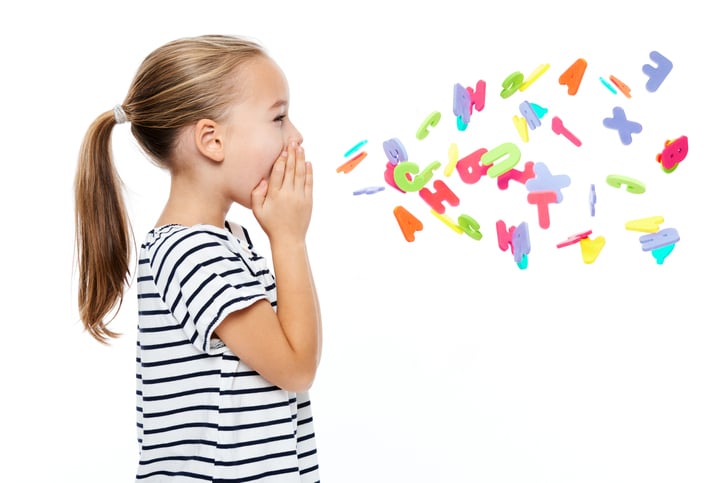Language & Communication in 4-Year-Olds: What to Expect
Watching the development of language and communication skills in 4-year-olds is both fascinating and critical for their growth. This age marks significant strides in their ability to express themselves and understand others, setting the foundation for future learning and social interactions.
Language and Communication Blossoms
Around the age of four, children hit remarkable strides in language and communication, showcasing their expanding capabilities in a variety of ways. This period is significant as their skills in vocabulary, sentence structure, storytelling, understanding, conversational engagement, and pronunciation see considerable growth.
- Expanding Vocabulary: Four-year-olds experience a rapid increase in their vocabulary, using a broader range of nouns, verbs, adjectives, and adverbs in conversation. This expansion allows them to express themselves more precisely and understand more complex language from others.
- Complex Sentences: Children at this age also start constructing more complex sentences that include multiple components and conjunctions like "and," "because," and "if." This development signifies a deeper understanding of grammar and the ability to express more complicated ideas.
- Storytelling Skills: Storytelling becomes more intricate, with children narrating events in a logical sequence and adding imaginative details. Whether recounting their day or spinning tales from their imagination, their ability to tell stories reflects their growing narrative skills and cognitive development.
- Understanding Questions: Four-year-olds can comprehend and respond to various types of questions, including "who," "what," "where," "when," and "why." This ability to process and accurately answer questions about stories or their experiences highlights their advanced understanding and communication skills.
- Conversational Skills: Engagement in back-and-forth exchanges becomes more pronounced, with children staying on topic and taking turns in conversation. Their participation in discussions, asking questions, and responding to comments indicates their developing social communication skills.
- Pronunciation Improvements: Pronunciation sees significant improvements, with most speech becoming understandable even to those outside the immediate family. While there may be occasional difficulties with certain sounds like "l," "r," "s," and "th," the overall clarity of speech at this age marks a key milestone in language development.
These advancements are not just milestones to be checked off; they are crucial for children's overall development, affecting their social interactions, emotional expression, and early literacy skills.

What to Watch Out For in Language and Communication Development
As we marvel at the language leaps 4-year-olds make, it's crucial to stay vigilant for signs that might suggest difficulties in language and communication development. Early recognition and intervention can make a significant difference in a child's communicative abilities and overall development.
Indicators of Potential Language Delays
- Limited Use of Gestures: By the time children reach 12 months, they should be using gestures such as pointing or waving goodbye. A lack of these gestures can be an early sign of language delay.
- Preference for Gestures Over Words: By 18 months, if a child predominantly uses gestures to communicate rather than vocalizations, it could indicate a reliance on non-verbal communication due to delayed language skills.
- Repetitive Use of Sounds or Words: If a 2-year-old child is only able to imitate speech or actions without spontaneously producing words or phrases, this might suggest a language delay.
- Difficulty with Following Simple Directions: By age 2, children should be able to follow simple instructions. Difficulty in understanding or acting on these could point towards a language comprehension issue.
- Unusual Tone of Voice: An atypical tone of voice, such as being nasally or unusually high-pitched, can sometimes be linked with language delays and is worth discussing with a healthcare provider.
Understanding these signs is key to identifying children who might benefit from additional support or evaluation by a speech-language pathologist (SLP). These professionals can assess a child's language abilities and recommend appropriate interventions or therapies.

Next Steps for Concerns
If you notice any of the signs mentioned or have other concerns about your child's language development, the first step is to consult with your pediatrician or a speech-language pathologist. They can provide a thorough assessment and, if necessary, recommend interventions such as speech therapy, which can significantly aid in improving your child's language skills.
In addition to professional support, there are many strategies parents and caregivers can use at home to encourage language development. Engaging in conversations, reading together, and incorporating language-rich play are all beneficial practices that can support a child's linguistic growth.
Supporting Children with Language Delays
For children diagnosed with language delays, early intervention and support are crucial. Speech pathologists might recommend group programs or individualized strategies to enhance language skills. These could involve practical activities that encourage verbal communication, like using pictures or books, and strategies for parents to use at home to support their child's language development.
Supporting Overall Language and Communication Development
For caregivers and educators, understanding these milestones enables targeted support. Patience and encouragement are key, as children navigate the complexities of language and communication. Fostering a rich language environment is pivotal. Engaging in activities like reading together, sharing stories, and having meaningful conversations can significantly support language development. These interactions not only enhance vocabulary and sentence structure but also teach children the nuances of communication, such as tone, volume, and body language, which are essential for effective expression and understanding.

Recognizing and nurturing these skills ensures a supportive environment that fosters not just linguistic competence but a lifelong love for learning and connection. The advancements in language and communication at this age lay a critical foundation, enabling children to navigate the world around them with confidence and curiosity.
This article is taken from a 5 part series on Developmental Milestones in 4-Year Olds. The other articles in this series include:
- Four Critical Areas of Development for 4-Year-Olds
- Physical Development in 4-Year-Olds
- Cognitive Milestones in 4-Year-Olds
- Language & Communication in 4-Year-Olds (this article)
- Social & Emotional Development of 4-Year-Olds

Angela Nelson, J.D., Ed.M.
Angela Nelson is the creator of the widely-recognized Language Builder Picture Card Series, and the creator and lead author for the Language Builder ARIS curriculum. Angela received her BA and JD from UCLA where she studied and practiced behavior psychology under Dr. Ivar Lovaas, and her Ed.M. at the Harvard Graduate School of Education, with a focus on technology innovation and education. As Founder and CEO of Stages Learning Materials, Angela has created autism, special needs and early childhood curriculum products since 1997. In addition to her duties at Stages, Angela writes for multiple industry publications and is Chair of the Education Market Association.




